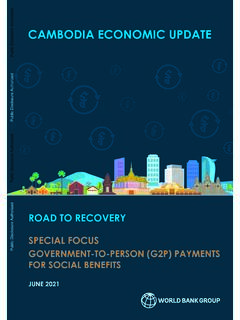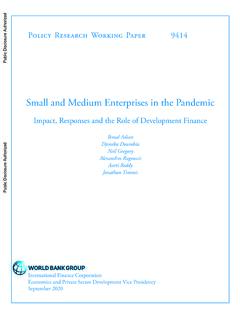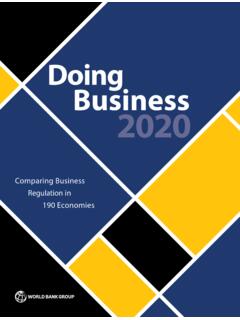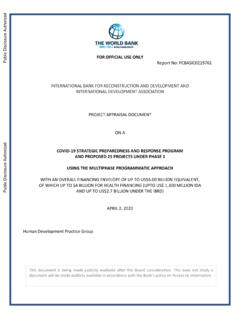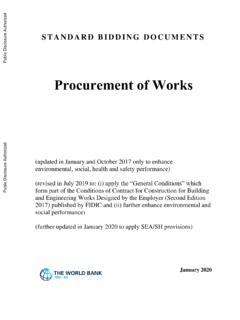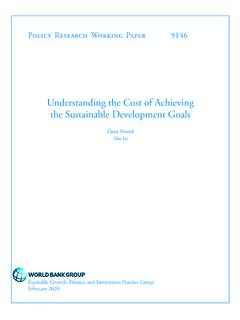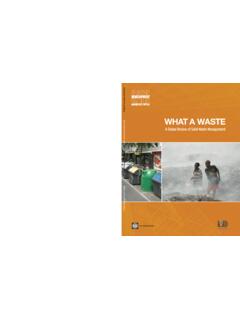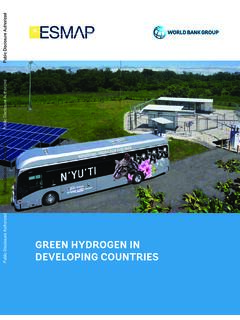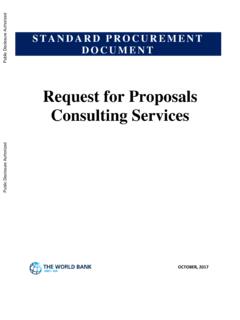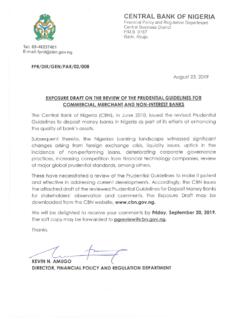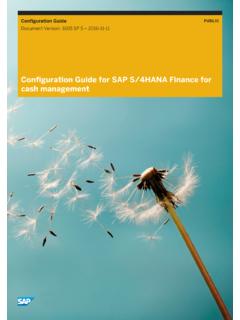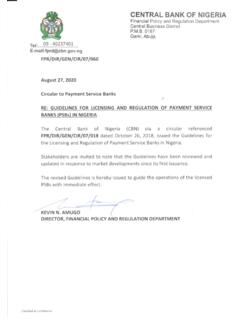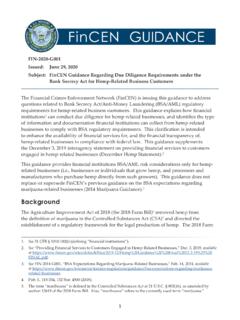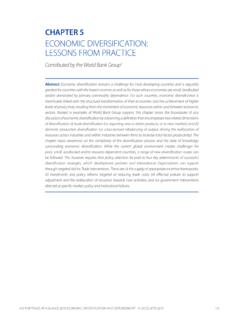Transcription of Public Disclosure Authorized INEQUALITY IN SOUTHERN AFRICA
1 Public Disclosure Authorized Public Disclosure Authorized Public Disclosure Authorized Public Disclosure Authorized CUSTOMS UNION. INEQUALITY IN. SOUTHERN AFRICA . AN ASSESSMENT OF THE SOUTHERN AFRICAN. INEQUALITY IN SOUTHERN AFRICA : AN ASSESSMENT OF THE SOUTHERN AFRICAN. CUSTOMS UNION. 2022 International Bank for Reconstruction and Development / The World Bank 1818 H Street NW. Washington DC 20433. Telephone: 202-473-1000. Internet: This work is a product of the staff of The World Bank with external contributions. The findings, interpretations, and conclusions expressed in this work do not necessarily reflect the views of The World Bank, its Board of Executive Directors, or the governments they represent. The World Bank does not guarantee the accuracy, completeness, or currency of the data included in this work and does not assume responsibility for any errors, omissions, or discrepancies in the information, or liability with respect to the use of or failure to use the information, methods, processes, or conclusions set forth.
2 The boundaries, colors, denominations, and other information shown on any map in this work do not imply any judgment on the part of The World Bank concerning the legal status of any territory or the endorsement or acceptance of such boundaries. Nothing herein shall constitute or be construed or considered to be a limitation upon or waiver of the privileges and immunities of The World Bank, all of which are specifically reserved. Rights and Permissions The material in this work is subject to copyright. Because The World Bank encourages dissemination of its knowledge, this work may be reproduced, in whole or in part, for noncommercial purposes as long as full attribution to this work is given. Any queries on rights and licenses, including subsidiary rights, should be addressed to World Bank Publications, The World Bank Group, 1818 H Street NW, Washington, DC 20433, USA; fax: 202-522-2625; e-mail: Cover design, interior design and typesetting: Brenda Ryan, South AFRICA Edited by: Janine Thorne, United Kingdom Photos: Shutterstock CONTENTS.
3 Boxes v Figures v Tables vii Acknowledgments viii Acronyms and abbreviations ix Executive summary 1. Chapter 1. INEQUALITY in the SOUTHERN African Customs Union 9. Context 9. Reducing INEQUALITY within and between SACU countries 11. The importance of reducing INEQUALITY 16. The drivers of income INEQUALITY 18. Differences in household and individual characteristics 19. Differences in income sources 23. A framework for analyzing income INEQUALITY 24. Chapter 2. The role of inherited circumstances 27. INEQUALITY of opportunity 27. High INEQUALITY of opportunity 28. Uneven and inequitable access to basic services 32. Low intergenerational mobility 36. A small middle class and low economic mobility 39. Wealth INEQUALITY 41. Staggering wealth INEQUALITY 41.
4 High income INEQUALITY 44. Spatial INEQUALITY 46. Wide and entrenched spatial disparities in welfare 46. Increased spatial clustering 49. Slow convergence of welfare levels in subregions 49. Chapter 3. The role of the primary income distribution 51. Labor markets as a source of INEQUALITY 51. High unemployment and labor market segmentation 51. Determinants of high earnings INEQUALITY among wage workers 54. The role of land ownership, governance, and productivity 60. INEQUALITY in land ownership in a historical context 60. Quantifying the impact of land ownership 63. The challenges of land governance 65. INEQUALITY IN SOUTHERN AFRICA : AN ASSESSMENT OF THE SOUTHERN AFRICAN CUSTOMS UNION iii Chapter 4. The role of the secondary income distribution 67.
5 Taxation as a source of INEQUALITY 67. Features of tax policy in SACU 68. Progressivity of the tax system 70. Quantifying the impacts of taxation on INEQUALITY 75. Summary 75. The role of social protection 76. Features of social assistance in SACU 76. Quantifying the impact of social assistance 80. Fragmentation and gaps in targeted social assistance programs 84. Summary 88. Chapter 5. The role of the tertiary income distribution and fiscal policy 89. Inefficiencies in spending on education and health 89. Improving the equity and efficiency of spending 92. Spending on basic and higher education 92. Healthcare spending 95. Indirect subsidies 96. The overall impact of fiscal policy on INEQUALITY 98. Chapter 6. The role of shocks 103.
6 Climate shocks as a source of INEQUALITY 104. Climate change and the risk of droughts and floods 104. Defining vulnerability to drought 105. Quantifying the impact of climate shocks on INEQUALITY 106. The role of COVID-19 109. Chapter 7. Addressing INEQUALITY in SACU: A policy discussion 117. Promoting equality of opportunity 118. Ensuring efficient and inclusive delivery of Public services 118. Strengthening the provision of early childhood development services 118. Supporting regional development and agglomeration 119. Addressing the highly skewed distribution of productive assets 119. Generating jobs and addressing labor market segmentation 120. Improving land distribution and productivity 120. Enhancing the impact of social spending 121.
7 Improving equity and efficiency of social protection 121. Improving targeting and efficiency of spending on education and health 122. Strengthening resilience to climate risks and economic shocks 123. References 124. iv INEQUALITY IN SOUTHERN AFRICA : AN ASSESSMENT OF THE SOUTHERN AFRICAN CUSTOMS UNION. BOXES. Box Key concepts and definitions 12 Box The legal framework and land tenure 66. Box Decomposing INEQUALITY into its sources 18 system in SOUTHERN AFRICA Box Race and INEQUALITY in South AFRICA 22 Box Features of tax systems in SACU 69. Box How the primary income distribution is 26 Box The CEQ methodology: Concepts and 71. generated caveats Box The legal framework for gender equality 31 Box Features of social protection in SACU 76.
8 In the SACU region Box Allocation methods for indirect subsidies 97. Box Intergenerational earnings mobility in 38 Box The range of fiscal instruments in SACU 99. South AFRICA Box The impact of climate shocks: Data, 106. Box Evolution of the middle class in South 39 methodology, and limitations AFRICA Box The COVID-19 pandemic: Data, 110. Box Measuring wealth INEQUALITY in Botswana, 42 methodology, and limitations Namibia, and South AFRICA Box COVID-19 preparedness: Financial 112. Box Wage polarization in South AFRICA 56 resilience in SOUTHERN AFRICA Box Gender gaps in tenure security 62 Box COVID-19: The distributional impact and 114. social protection responses FIGURES. Figure International and regional 1 Figure Relative INEQUALITY of opportunity 28.
9 Comparison of Gini coefficients in South AFRICA , 2018. Figure Framework for assessing sources 2 Figure Contribution of INEQUALITY of 29. of income and consumption opportunity to overall INEQUALITY INEQUALITY Figure Contribution of each circumstance 30. Figure International and regional 12 to overall INEQUALITY of opportunity comparison of Gini coefficients Figure People using at least basic 33. Figure Changes in INEQUALITY over time 13 drinking water services Figure Measures of INEQUALITY and 14 Figure People using at least basic 33. poverty sanitation services Figure Growth incidence of consumption 15 Figure Prevalence of stunting and HIV 34. per capita in individual SACU Figure Access to electricity 35. countries Figure Share of the population with 35.
10 Figure Decomposition of INEQUALITY 19 access to selected basic services in by individual and household Lesotho, 2017. characteristics Figure Children's educational attainment, 37. Figure Decomposition of INEQUALITY in 20 conditional on fathers' education individual SACU countries Figure Wealth holding by income decile 41. Figure Decomposition of INEQUALITY by 23 in Botswana, Namibia, and South income source, 2015 18 AFRICA Figure A conceptual framework of 25 Figure Household net wealth holding by 43. the components of income income decile distribution INEQUALITY IN SOUTHERN AFRICA : AN ASSESSMENT OF THE SOUTHERN AFRICAN CUSTOMS UNION v Figure Relative net wealth INEQUALITY in 44 Figure INEQUALITY impact by program 83. selected countries Figure INEQUALITY impact, coverage, and 84.
